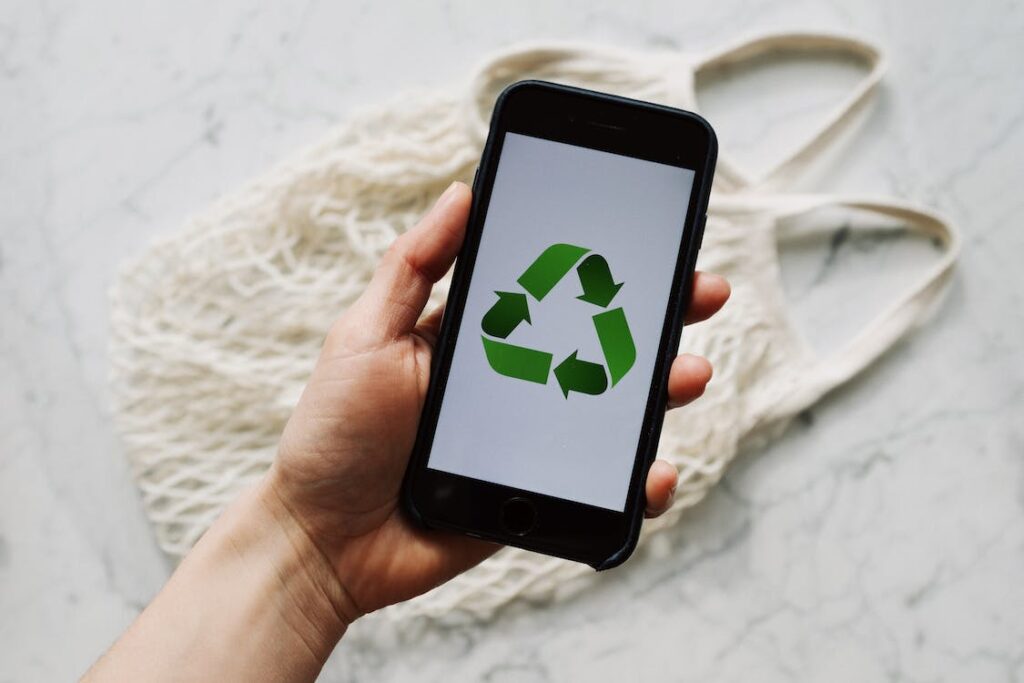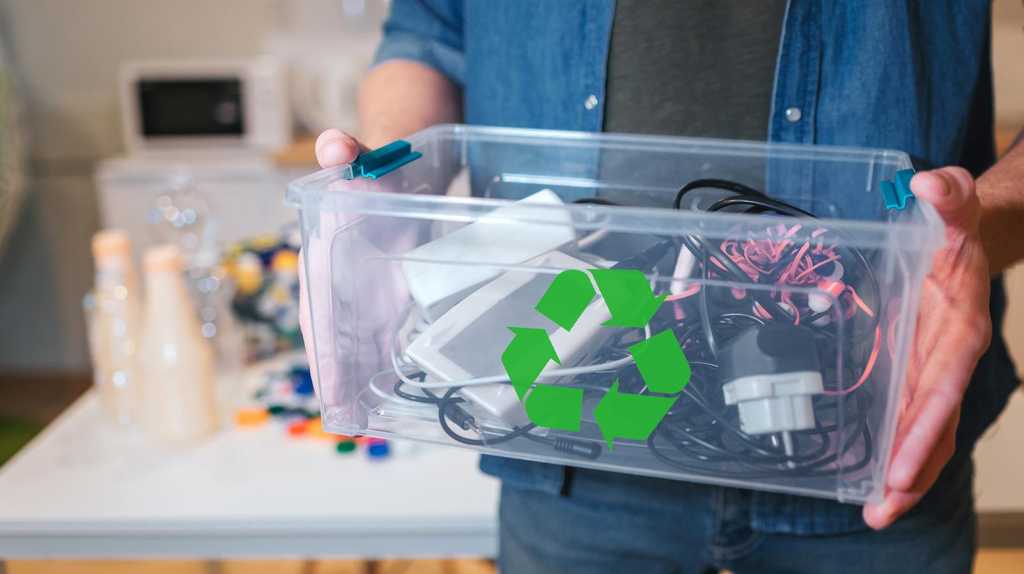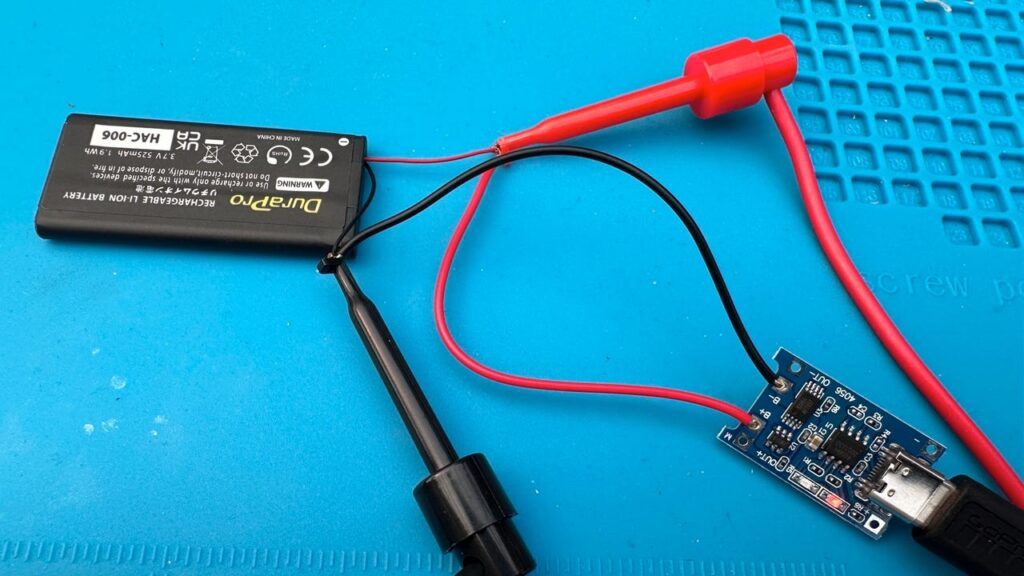Let’s start with the fact that to make any battery, it takes fifty times more energy than it can produce. The carbon emissions of any manufacturing is huge and every gadget you buy adds cubic meters of carbon dioxide to the atmosphere.
These are serious issues, but they are also only half the trouble. Huge amounts of harmful compounds – lead, mercury, cadmium, and chromium – end up in our soil, water, air, and food because of electronics that are disposed of in conventional landfills or any other possible way.
This type of waste contains large amounts of toxins that, when ingested through the skin or respiratory tract, can cause cancer. And, unfortunately, this is not the only thing people suffer from.
Cell phones, laptops, and other electronics require lithium-ion batteries. And these, in turn, require cobalt, since the main consumable of such batteries is lithium-cobalt oxide. Conventional batteries contain about 3/5 of this metal and this is the best that has been invented so far. As a result, the price of cobalt on the London Metal Exchange (LME) is $29,000 per ton.
More than 50% of cobalt is mined in the Democratic Republic of Congo and 70% of the world’s supply of the metal comes from there. Hundreds of thousands of Congolese, including women and children, work in the mines.
They often have no safety equipment, and they work in conditions that would horrify ordinary miners. Of course, they also dig the mines with shovels. Many of them have heard about cell phones only from their acquaintances.
What Useful Things Can Be Extracted from Electronics?

Source: pexels.com
About 4/5 of all things that are thrown away could be recycled for reuse – even cars. Think about it: 80% of an average car could be recycled, let alone electronics.
E-waste includes non-ferrous metals: barium, beryllium, vanadium, bismuth, gallium, germanium, europium, iron, gold, cobalt, copper, mercury, lead, silver, chromium, zinc.
Rare earth metals:
- indium (In) – touch screens and photovoltaic cells;
- gallium (Ga) and tellurium (Te) – photocells;
- erbium (Ert) – fiber optics;
- tantalum (Ta) – capacitors;
- lanthanum (La) and cerium (Ce) – batteries;
- lanthanum (La), cerium (Ce), europium (Eu), terbium (Tb) and yttrium (Y) – fluorescent coatings and energy-saving lamps.
Recycling electronics allows you to extract it all and reuse it. For example, 1 million cell phones can be recycled into 33 pounds of palladium, 75 pounds of gold, more than 770 pounds of silver and 35,000+ pounds of copper. One ton of electronic recyclables contains more gold than 17 tons of gold-bearing ore. The total amount of materials dumped into waste each year contains about 300 tons of gold – more than 10% of annual production.
According to the Scrap Recycling Industry Institute (USA), U.S. companies recycle for reuse more than 5 million tons of e-waste per year. The total annual economic impact of the recycling industry is $5.45 billion dollars. The electronics recycling industry directly or indirectly supports nearly 45,000 jobs in the US alone. More than 90% of the materials recovered from discarded appliances made in the US remain in the country.
There is even a special economic concept called the circular economy (CE). It develops a model of production and consumption that includes the reconstruction and reuse of all suitable materials. Through CE, scientists and economists are trying to solve the problems facing humanity, such as pollution, loss of biodiversity, and waste reduction.
Should We Sell, Give Away, or Recycle?

Source: techadvisor.com
It would seem that if something isn’t needed, we should just sell it (or give it away for free). Yet it is not so simple here. Selling inexpensively is a rather tedious procedure. Trading second-hand things through ads takes up a lot of time, which is spent on communication with different people who offer you weird ideas instead of money, endlessly haggle, beg or, in general, are not going to buy anything.
Therefore, it is still much easier to throw away an unwanted thing than to find a normal buyer for it, or even just someone who wants to and can take it away from you. And even the recycling of used electronics is not always a simple matter, and sometimes it is not free.
For example, in the US different states have rules for handling end-of-life electronics that are radically different. In Kentucky, for example, any electronics will be taken away by a garbage truck. In Illinois, it must be brought only to recycling centers, and can not be thrown away.
In New York, cell phones must be recycled. And in Vermont, some recycling centers charge a fee for certain types of electronics. The list of fees includes game consoles, telephones, and music centers. There is also a limit of seven pieces per visit.
Corporate Policies

Source: skillcast.com
Manufacturers are still working hard to make us buy new devices more often and repair them less often. Sometimes it comes to absurdity. Some Epson printers self-lock as a result of wear and tear of porous ink collecting pads. HP developers went further and tried to block printers whose owners used non-original or modified cartridges.
In the realm of printers, users often encounter frustrating issues such as the “No AirPrint Printers Found Error,” highlighting the challenges consumers face not only with device longevity but also with the intentional obsolescence introduced by manufacturers in various forms.
Recently, Arlo, a manufacturer of video surveillance systems, blocked some of its cameras on the grounds that they had expired (the cameras were working fine). These cases perfectly illustrate the policy of manufacturers, who have already started to shorten the life of equipment in order to ensure the growth of production.
In the case of mobile devices, forcing users to buy a new gadget is much easier: we are tied to the manufacturer by software services, support for which can be terminated at any time. The planned death of a gadget in case of termination of its support is a common story today.
Developers can program the life of the gadget hardware by installing a non-removable battery during the production process. Any flagship smartphone of the last three or four years, as well as mid-range models, still perfectly cope with the overwhelming majority of tasks, but the battery life is equally short.
Battery Life and Repairability

Source: zdnet.com
Fortunately, some manufacturers – such as Nintendo – are clear about battery life. Nintendo’s tech support says that the console’s battery life gradually decreases: after about 800 charging cycles, it drops to 80% compared to new. VanMoof, a manufacturer of electric bicycles, claims the same 800 cycles. The company even offers to replace the bicycle within two years under warranty if the battery capacity drops below 70% during this time.
Apple, on the other hand, is already phrasing things more cautiously. Tech support points out that all rechargeable batteries have a limited lifespan and must eventually be disposed of. According to the information indicated by Apple, battery life depends on how the device is used, as well as on the settings.
As for the functionality, only Apple and Samsung offer really long support for their gadgets at this moment. Samsung promises to send operating system updates for four years and update the security system for five years to keep its latest flagship smartphone models and mid-range devices up to date. That’s already more or less a decent lifecycle, which suggests that the trend toward longer lifespans for electronics is taking hold.
Yet Europe is taking steps to extend the life of electronic devices. France has introduced a repairability index of five criteria, one of which is the ease of disassembly of the device and access to spare parts. And in the future, a durability index will be added to it.
Conclusion
Someday we will have higher-capacity batteries, maximally repairable gadgets, and laws that incentivize sustainability and facilitate repair of existing devices. There are grounds for optimism.
But for now it is worth paying attention to simple rules of battery operation, which will allow you to slightly extend the life of the battery: avoid deep discharge (a lithium-ion battery lasts longest at 25-80% charge), don’t recharge it too frequently, and store it in a cool place (20 °C / 68 °F is perfect), and only turn to pros – such as Smart Addiction, masters of MacBook repair in NYC – when you need to repair your gadgets.



